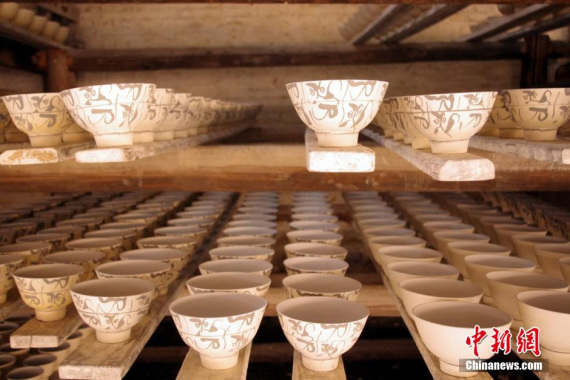
Often called the "Porcelain Capital" for its important role in the domestic and international ceramics industry, Jingdezhen is renowned for its ancient porcelain production that stretches back more than 1,700 years. (Photo/Chinanews.com)
Jingdezhen is China's most famous porcelain-making center. Its royal kilns produced the finest ceramics for emperors of the Ming and Qing dynasties. Now, authorities are stepping up their efforts to protect the historic sites.
Often called the "Porcelain Capital" for its important role in the domestic and international ceramics industry, Jingdezhen is renowned for its ancient porcelain production that stretches back more than 1,700 years.
Jingdezhen porcelain has four special qualities: "White Like Jade", "Bright as a Mirror"; "Thin as Paper"; and "Sounds like a Bell".
Its reputation draws in tens of millions of tourists every year to the city.
"I took my kid here. He's learned about the history of the ancient kilns and the making of ceramics in books, but being here is a whole new experience for him. He's learned a lot more about the ancient craft," one tourist said.
Local authorities are endeavouring to preserve this cultural heritage, and began in 2015 to create a national park at the site of a Ming Dynasty royal kiln dating back some 500 years.
Visitors can retread the footsteps of archaeologists on pathways at the excavation sites, while exhibition halls showcase the site's past achievements.
"Through excavations and discoveries in recent years, we have unveiled the mystery of the royal kilns, the relationship between the kilns and the royal court, the process of making royal porcelain, and so on. And the park is designed to preserve and showcase the findings to the public," said Jiang Jianxin, director, Jingdezhen Ceramics Archaeological Research Centre.
Local authorities are planning to finish the national archaeological park in three years and make it to UNESCO's intangible heritage list in the next 5 to 10 years.


















































